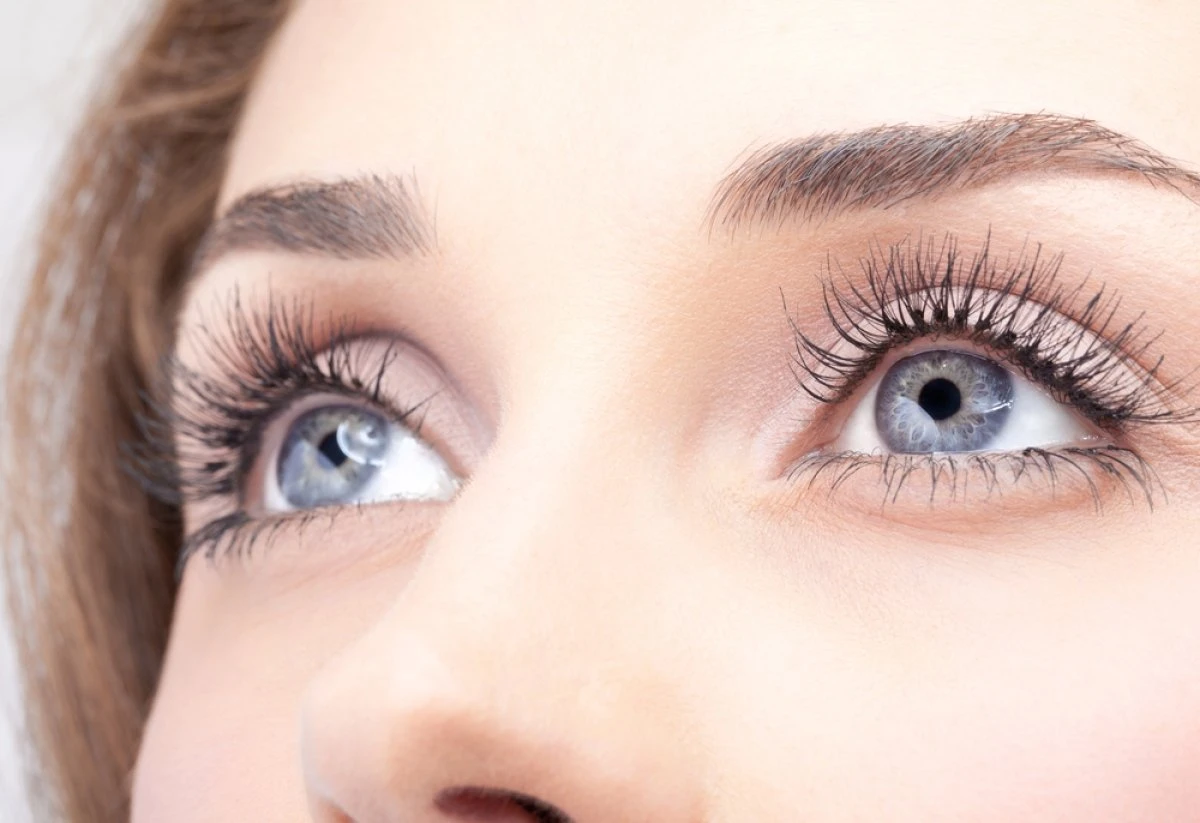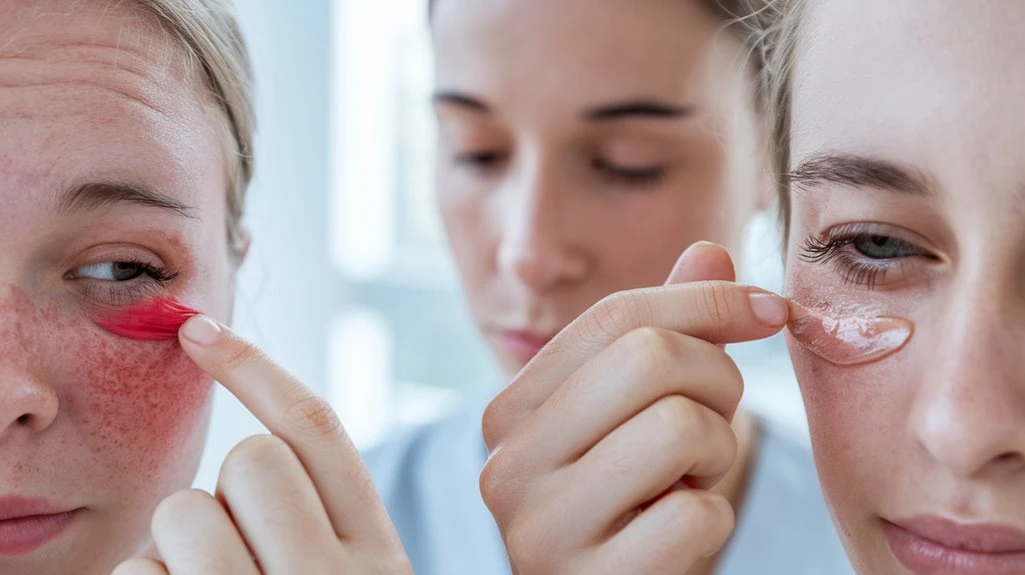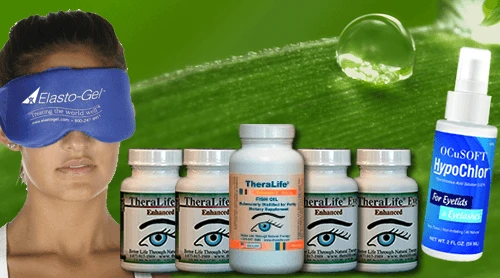To identify acute blepharitis, observe for sudden redness and swelling along the eyelid margin, indicating active inflammation. Additionally, look for an abrupt crusty discharge or flaking at the lash line—often yellow or whitish—which aids in quick diagnosis. Lastly, be aware of any increased sensitivity or discomfort, such as burning or gritty sensations at the lid margins. Recognizing these signs aids in differentiating acute presentations, allowing for prompt management.
TheraLife’s products offer significant benefits to customers dealing with blepharitis and other eye-related conditions. Their natural, science-backed remedies focus on enhancing eye health by addressing root causes, not just symptoms. TheraLife provides holistic solutions that promote ocular wellness, reduce inflammation, and offer relief from discomfort, ultimately leading to better eye health and improved quality of life for their customers. For detailed insights and solutions, explore TheraLife’s comprehensive
Best Blepharitis Treatment From TheraLife- When Drops Don’t Work.
offerings.
Key Takeaways
- Look for sudden redness and swelling along the eyelid margin, often with tenderness or warmth.
- Check for crusty yellow or whitish discharge and flaking at the base of the eyelashes.
- Notice increasing eye discomfort, such as burning, stinging, or gritty sensations, especially at the lid margin.
- Observe for heightened sensitivity to light (photophobia) and increased blink reflex in affected eyes.
- Use a slit-lamp or close inspection to detect localized erythema and puffiness, indicating acute inflammation.
Identifying Sudden Redness and Swelling Along the Eyelid
Although acute blepharitis can present with various symptoms, sudden redness and swelling along the eyelid margin are key diagnostic indicators. When you evaluate a patient, prompt recognition of these changes is critical for early intervention.
Eyelid irritation manifests through hyperemia and edema, both of which signal active inflammation. Inflammation causes stem from bacterial colonization, meibomian gland dysfunction, or hypersensitivity reactions. Close inspection often reveals localized erythema and puffiness, distinguishing acute cases from chronic presentations.
Assess for tenderness and warmth, as these signs often accompany eyelid irritation. Clinical evidence supports that acute inflammation mainly targets the anterior eyelid margin, where lash follicles reside.
Quick identification of these symptoms allows you to differentiate between potential etiologies and direct appropriate management for acute blepharitis presentations. Warm compresses and eyelid hygiene are recommended home treatments that help alleviate these acute symptoms by reducing bacterial overgrowth and soothing inflammation.
Recognizing Rapid Onset of Crusty Discharge and Flaking
When evaluating acute blepharitis, observe for the abrupt development of crusty discharge and flaking along the eyelid margin, as these are hallmark features of rapid onset inflammation.
You’ll often find that the crusty discharge accumulates at the base of the eyelashes, forming hardened debris that can be yellow or whitish in color.
Eyelid flaking may resemble seborrheic scales or dandruff, presenting as fine, irregular particles distributed along the lid margin.
These signs are best detected during slit-lamp examination or by careful inspection of the eyelid edge.
Rapid appearance of crusty discharge and eyelid flaking distinguishes acute presentations from more chronic forms, where symptoms build gradually.
Document any sudden change in eyelid debris to support an accurate, evidence-based diagnosis of acute blepharitis.
To effectively control blepharitis and prevent recurrence, it is essential to follow recommended treatments and maintain proper eyelid hygiene.
Noticing Increased Sensitivity and Eye Discomfort
Because acute blepharitis often triggers inflammation of the eyelid margin, patients commonly report increased sensitivity and ocular discomfort. You may notice persistent eyelid irritation, often described as burning, stinging, or a gritty sensation localized at the lid margins. Clinically, heightened light sensitivity (photophobia) is frequently observed due to disrupted tear film stability and secondary corneal involvement. When evaluating acute cases, pay particular attention to reported exacerbation of discomfort in bright environments, which can guide further differential diagnosis. A targeted examination will reveal hyperemia, edema of the eyelid margins, and increased blink reflex. It’s essential to distinguish these features from chronic ocular surface disorders. Prompt recognition of these symptoms supports early intervention, minimizes complications, and guarantees appropriate management of acute blepharitis, optimizing long-term visual outcomes. Incorporating daily eyelid hygiene practices can significantly reduce symptoms and support effective management of blepharitis.
Best Blepharitis Treatment From TheraLife- When Drops Don’t Work.
Frequently Asked Questions
What Causes Acute Blepharitis to Develop Suddenly?
You can develop acute blepharitis suddenly when bacterial infections—most commonly Staphylococcus aureus—invade your eyelid margins.
Additionally, pre-existing skin conditions like seborrheic dermatitis or rosacea may predispose you to rapid onset.
These triggers disrupt the eyelid’s normal flora, causing inflammation, gland blockage, and irritation.
Clinically, recognizing the underlying cause is key since bacterial infections and dermatologic comorbidities require targeted diagnostic workup and evidence-based, tailored management strategies for symptom resolution.
Is Acute Blepharitis Contagious to Others?
Think of your eyes as a delicate garden, where moss (bacteria) sometimes grows unchecked. You’re probably wondering if acute blepharitis poses contagious risks.
While most cases, especially those linked to staphylococcal infection, don’t result in direct infection spread, it’s still possible through shared towels or cosmetics.
Evidence shows transmission is rare with proper hygiene. Diagnostic focus remains on symptom identification, rather than quarantine measures, due to the low contagion potential in most cases.
Can Lifestyle Changes Help Prevent Future Flare-Ups?
You can reduce future flare-ups of acute blepharitis by prioritizing hygiene practices, such as routine eyelid cleansing with diluted baby shampoo or commercially formulated scrubs.
Evidence suggests dietary adjustments, specifically increasing omega-3 fatty acids, may diminish meibomian gland dysfunction.
Diagnostic protocols emphasize compliance with both interventions, as they target underlying inflammation and microbial overgrowth.
Consistently maintaining these habits serves as a preventative strategy, ensuring chronic symptoms are minimized and ocular surface health is optimized.
How Is Acute Blepharitis Different From Chronic Blepharitis?
Like a sudden storm versus a lingering drizzle, acute blepharitis symptoms strike quickly—redness, swelling, and discomfort erupt within days.
You’ll notice debris at the lid margins and pronounced irritation.
Chronic blepharitis characteristics, on the other hand, unfold gradually and persist for months, marked by persistent eyelid inflammation, thickened lid margins, and recurrent eye irritation.
Diagnostically, acute forms require rapid intervention, while chronic cases demand long-term management and vigilant monitoring for complications.
When Should I Seek Medical Attention for Acute Blepharitis?
If you notice severe eyelid redness, significant swelling, persistent irritation, or vision changes, it’s essential to seek medical attention for acute blepharitis.
Symptom recognition is key—if standard measures like eyelid hygiene don’t help, or symptoms worsen, complications such as corneal involvement may arise.
An ophthalmologist can diagnose the condition accurately and recommend evidence-based treatment options, such as topical antibiotics or corticosteroids, to help you manage symptoms and prevent long-term sequelae.
Best Blepharitis Treatment From TheraLife- When Drops Don’t Work.
Conclusion
When diagnosing acute blepharitis, it’s essential to recognize the rapid onset of symptoms such as sudden eyelid redness, swelling, crusty discharge, and significant discomfort. These symptoms are crucial indicators that allow for early intervention. TheraLife’s products are specifically designed to support customers by addressing these symptoms effectively. They offer natural and holistic approaches to eye health, helping reduce inflammation, manage discomfort, and prevent recurrence. By using TheraLife’s products, patients can improve their outcomes with evidence-based confidence, clearly differentiating between acute and chronic blepharitis or less severe cases.





